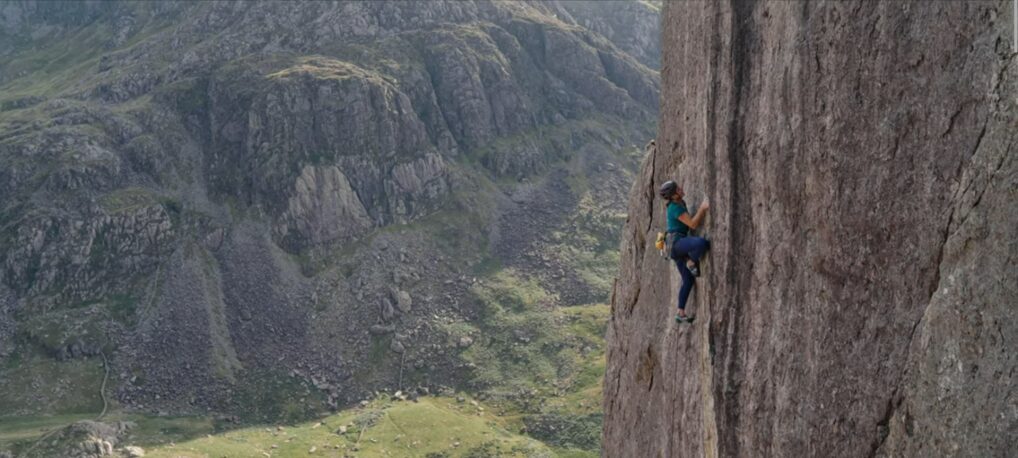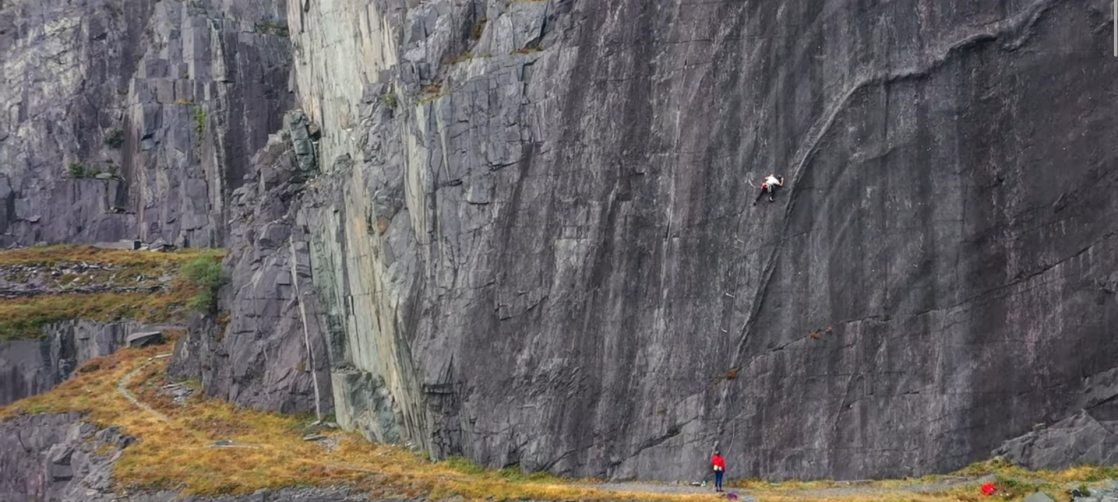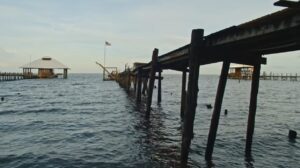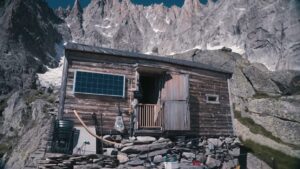Llanberis in Northwest Wales is dense with routes that give the region arguably the best climbing in Britain. But ascending the lines of the green and grey Cymru hills is more than just technical. Adra, a new documentary, delves into the long history of Welsh climbing and its importance to local identity.
Friends Lewis Perrin-Williams and Zoe Wood grew up on the cliffs of Llanberis. Together, they take the viewer along on various iconic local climbs, like the Left Wall of Dinas Cromlech. When it was first ascended in 1956, climbers wore heavy boots and used railroad ties for protection. A fall meant a serious injury at best.

Zoe Wood climbs the Left Wall. Photo: Screenshot
Lewis’s father, mountaineer and author Jim Perrin, recounts the neglected history of native Welsh climbers. Recorded first ascents during earlier eras went to famous English climbers like Noel Odell, who used the hills of Wales as a proving ground before moving onto the Alps and Himalaya. But local Welsh copper miners were the true pioneers of many routes.

The first recorded ascent of ‘Slanting Gully,’ above, was in 1897. But Jim Perrin believes Welsh copper miners made the true first ascent. Photo: Screenshot
Devil-may-care attitudes
Older climbers like Jim Perrin draw a connection between the daring, “devil-may-care” attitudes of climbers in the 1980s and the rise of Margaret Thatcher. Thatcher’s tenure is remembered with intense hatred in Wales. Her economic policies left millions unemployed, and the violent police response to the 1984-5 miners’ strike shocked the nation.
Adra explores how climbing was counter-cultural in 1980s Wales.
“My climbing came from not being subject to social conditioning,” explains John Redhead. Many of the young people in the area were out of work. They started climbing as a way to escape their daily anxieties.
Lewis explains that climbing isn’t just a sport but a way of celebrating and communing with his homeland. Adra means “home” in Welsh, a language that was illegal to speak in court until 1942. Celebrating the Welsh language, heritage, and, yes, climbing history is an act of resistance to centuries of British rule.

Lewis on ‘The Rainbow of Recalcitrance,’ a route first climbed by John Silvester in 1984. Climbing the route, Lewis says, is a way of paying tribute to Silvester, a local climber who passed away last year. Photo: Screenshot
Climbing, Adra explains, is ancient and indigenous in Wales. But it also nourishes an immediate, living community.






